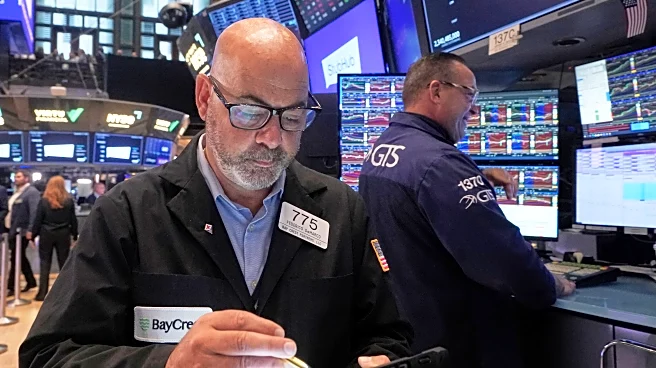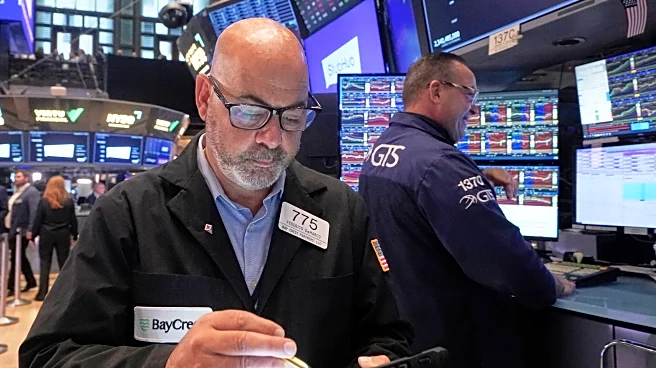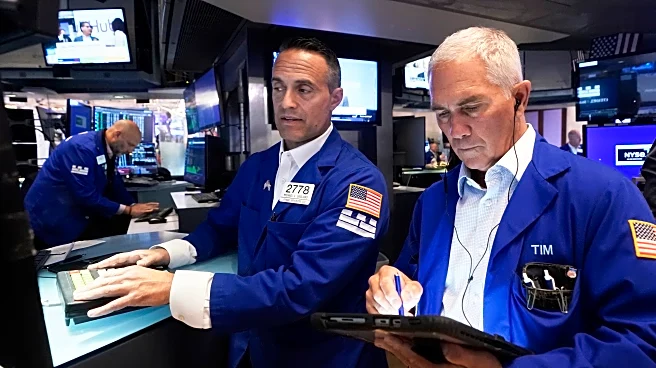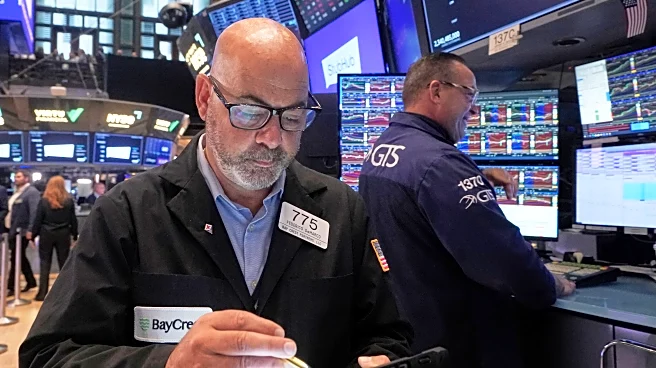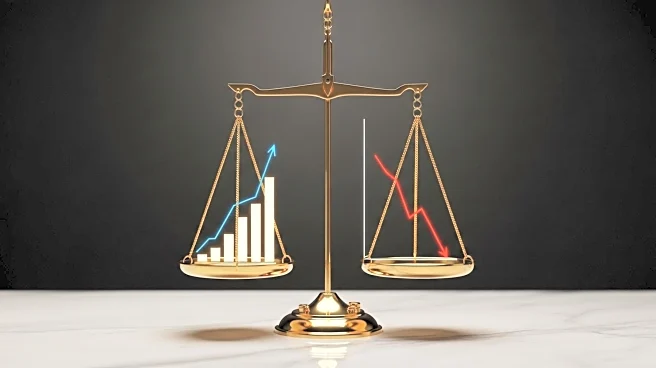What is the story about?
What's Happening?
The Federal Reserve recently announced a 0.25% cut in its benchmark overnight lending rate following its September meeting. This decision was largely anticipated by Wall Street, but the Fed's more hawkish outlook for the following year, with only one rate cut forecasted for 2026, led to mixed market reactions. The Dow Jones Industrial Average saw a slight increase of less than 0.6%, while the S&P 500 closed down by 0.1%, and the Nasdaq Composite experienced a loss of about 0.3%. CNBC's Jim Cramer advised investors not to make significant market moves based solely on the Fed's interest rate decisions, emphasizing that major market themes remain unchanged. Cramer noted that the Fed is navigating between continued inflation pressures, partly due to tariffs, and a weakening job market.
Why It's Important?
The Federal Reserve's decision to cut interest rates is significant as it reflects ongoing concerns about economic growth and inflation. The mixed market reactions highlight investor uncertainty about the future economic landscape. The Fed's cautious approach, as noted by Jim Cramer, suggests that while the central bank is attempting to stimulate the economy, it is also wary of potential inflationary pressures. This decision impacts various sectors differently, with technology and artificial intelligence potentially benefiting, while interest rate-sensitive sectors like housing may not see immediate gains. The Fed's actions and outlook are crucial for businesses and investors as they navigate economic conditions and adjust their strategies accordingly.
What's Next?
The Federal Reserve has indicated the possibility of two more rate cuts before the end of the year, which could further influence market dynamics. Investors and businesses will be closely monitoring the Fed's future meetings and statements for any changes in monetary policy. Additionally, the ongoing impact of tariffs and inflation will remain key factors in the Fed's decision-making process. Stakeholders across various sectors will need to assess how these economic policies affect their operations and investment strategies.
AI Generated Content
Do you find this article useful?


